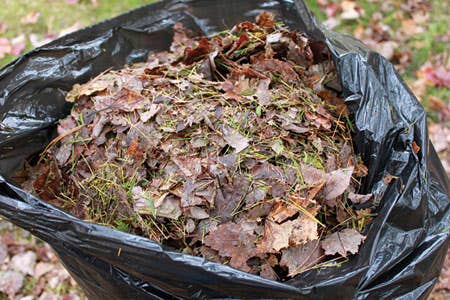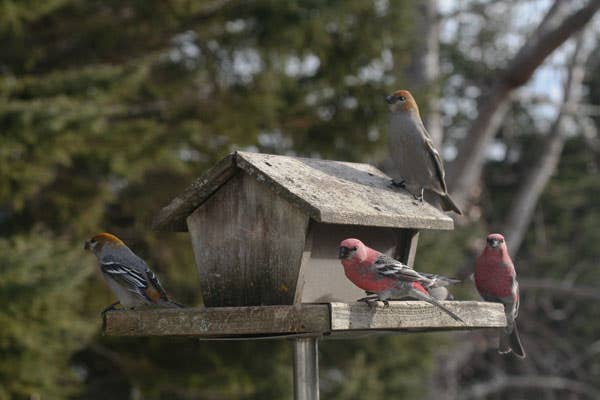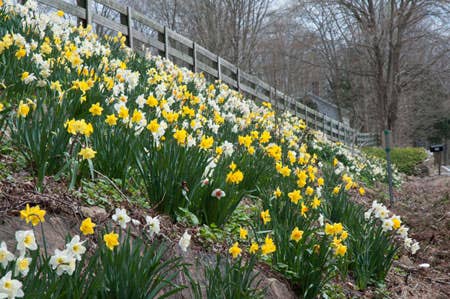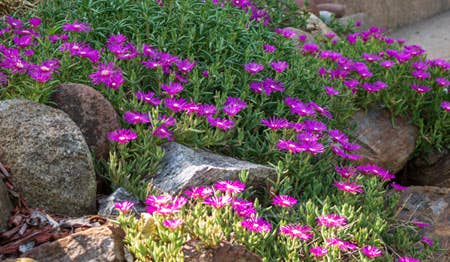Q&A with Bob Polomski 10
Extension Consumer Horticulturist, Clemson University How should I protect my strawberry bed over the winter?-S.S., Ridgetown, Ontario Answer: Strawberry crowns and roots require protection wherever winter temperatures drop below 15°F….
Extension Consumer Horticulturist, Clemson University
How should I protect my strawberry bed over the winter?-S.S., Ridgetown, Ontario
Answer: Strawberry crowns and roots require protection wherever winter temperatures drop below 15°F. This ordinarily entails covering the plants with mulch when they have become fully dormant, which should be about mid-November in your area. Apply a three- to four-inch layer of a light, fluffy material such as wheat, oat, rye, or barley straw. Salt marsh hay and pine needles are also good mulches.
In the spring, rake away the mulch when new growth emerges. Tuck some of it around the crowns and rake the rest into the rows. If there's any danger of frost, you can return the mulch to the beds to protect the flowers.
Besides its insulative effects, mulch reduces soil heaving caused by the freezing and thawing of soil. In addition, mulch suppresses weed growth, conserves moisture, and reduces the occurrence of fruit rots by keeping the strawberries from coming in contact with bare ground.
For additional protection, you can also apply a layer of floating, spun-bonded or mesh polyester or polypropylene fabric row cover (0.5 to 0.6 ounces/yard) over your plants in the fall as soon as the night temperatures fall consistently below 55°F. The row cover will allow light and water to pass through the fabric, but it will also raise the air temperature during the day and moderate temperatures at night. Once the plants have gone dormant, you can then top the row cover with a layer of mulch. Remove the mulch from the beds as soon as the snow melts, but leave the row covers on your strawberries until they begin to flower. Research has shown that using row covers encourages earlier flowering and, in most cases, an increased total yield.
My star magnolia has produced a lot of reddish-orange seeds. Can I plant them right away or do they require some special treatment before I sow them? —A.F., Myrtletown, CA
Answer: The seeds of star magnolia (M. stellata) are borne in a cone-shaped fruit. As the fruit ripens and dries, it splits open to expose the fleshy seeds inside. The aril, or fleshy outer coat, must be removed from these seeds because it contains chemicals that inhibit germination. The easiest way to do this is to soak the seeds in water for a few days. Once the oily pulp has softened, pinch out the seeds and rinse them off in clean water.
The seeds require a cool, moist stratification period to overcome embryo dormancy. Place the seeds in a plastic bag filled with damp milled sphagnum peat moss. Then place the bag in the refrigerator for two to three months at 40°F. Keep the medium moist throughout this stratification period.
At the end of this chilling period, sow the seeds about one-half inch deep in pots or flats filled with a damp mixture of equal parts of peat moss, vermiculite, and perlite. Cover with a layer of plastic or glass and place it in a warm, 65-75°F location in bright, indirect light until the seeds sprout. Then uncover and move the flats to direct light. Transplant the seedlings from the flat to individual pots after their true leaves have developed. For more information, visit the American Magnolia Society web site: www.supernet.net/~magnolia/.
Can you suggest any fruit trees that I can grow indoors? -R.T., Russell, KS
Answer: Given adequate light, water, and nutrients, a number of container-grown tropical and subtropical fruit trees can be cultivated as houseplants. These have an obvious advantage over temperate-region fruits, such as peaches or cherries, in that these plants need no required hours of chilling (hours between 32 and 45°F) in order to flower and fruit.
The easiest of these fruits to grow are citrus, especially calamondins, lemons, limes, and kumquats. These have lower light and heat requirements than oranges and grapefruits. Varieties especially suited to containers are ‘Improved Meyer’ and ‘Ponderosa’ lemons, ‘Bearss’ or Persian lime, Key lime (Citrus aurantiifolia), and Tahiti orange (C. xlimonia ‘Otaheite’). ‘Meiwa’ and ‘Nagami’ kumquats as well as the kumquat hybrids—limequat, orange-quat, citrangequat—also make good choices. Finally, consider growing ‘Dancy’ tangerine. Although citrus are self-fertile, you may have to assist in pollinating the flowers, either by shaking the tree or daubing pollen onto the stigmas with a cotton-tipped swab.
The ultimate sizes of these plants will depend on the size of the container, the amount of pruning, and the particular rootstock onto which they are grafted. Poncirus trifoliata ‘Flying Dragon’ is often used as a size-controlling rootstock. Kumquats grafted thereon are truly dwarf.
Where greenhouse space is available, and size less of an issue, there is a far wider range of possible exotic fruits. William Ross of the California Rare Fruit Growers ranks the following in order of increasing difficulty: Barbados cherry (Malphighia glabra); Surinam cherry (Eugenia uniflora); jaboticaba (Myrciaria cauliflora); carambola (Averrhoa carambola); feijoa and pineapple guava (Acca sellowiana); mango; papaya; and banana.
Will applying pine straw to my landscape beds acidify the soil? -T.R., Atlanta, GA
Answer: Any organic mulch will enhance root growth, moderate soil temperature, reduce water evaporation from the soil, and suppress weed growth. Mulch also prevents soil erosion from wind and water, and, as it decomposes, it increases soil nutrient levels.
According to a 1999 study of mulches in the Journal of Arboriculture, using pine straw can indeed lower the pH of soil. Florida researchers found that a 3.5-inch layer of pine needles decomposed more rapidly than any of the bark and wood chip mulches tested, reducing in depth by half in a single year, and, in the process, lowering the underlying soil pH from 5 to 4.4. Pine needles make an excellent mulch for acid-loving rhododendrons, camellias, and blueberries. When used as a mulch for other plants, a scattering of ground limestone should offset any pH drop. To be sure that the pH of the soil in your garden beds remains at the optimal level, have your soil tested every few years by your local cooperative extension service or other professional testing laboratory. H







